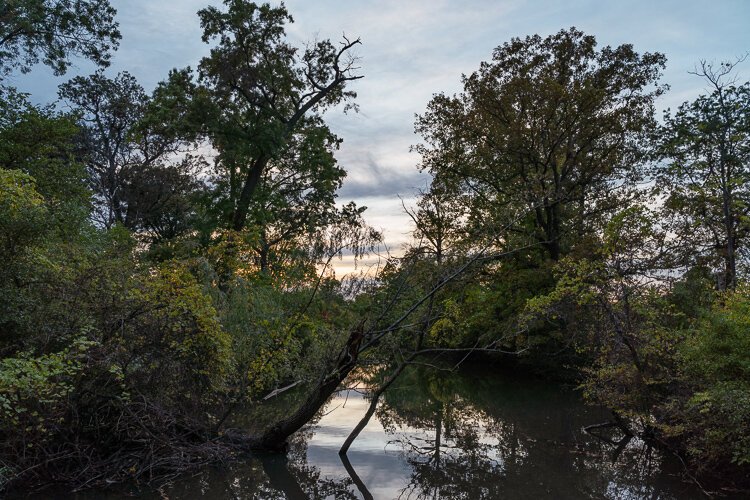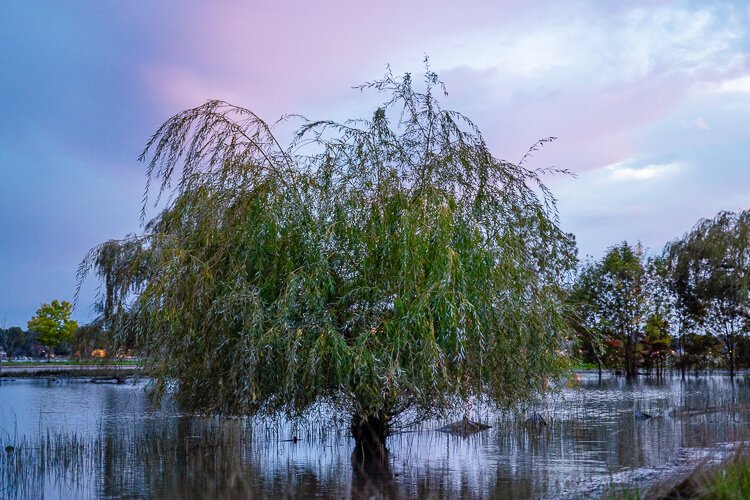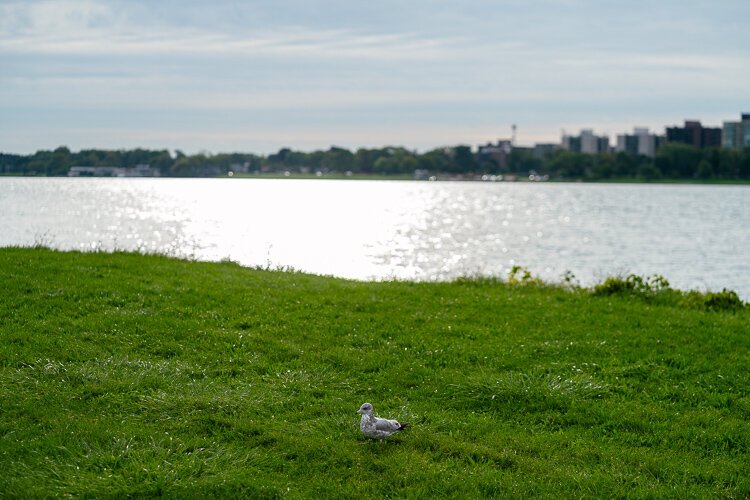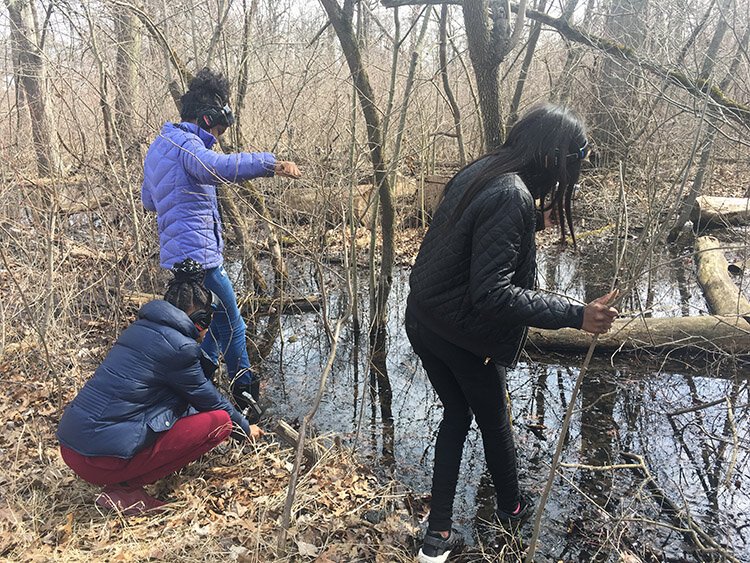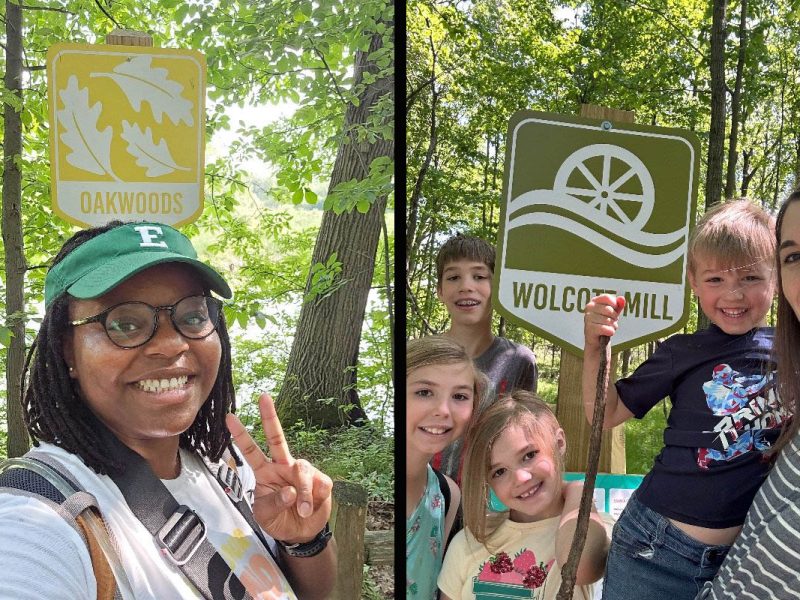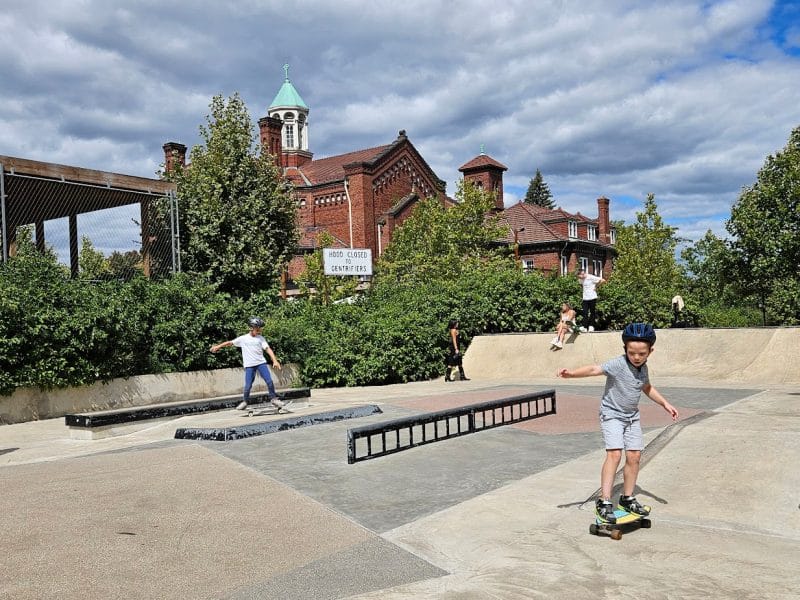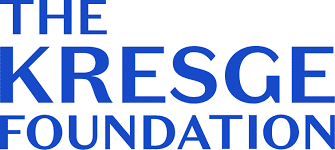How Michigan scientists are using sound to tune into the health of the world around us
Scientists from and based in Michigan have made advances in this interdisciplinary discipline to learn more about the health and integrity of ecosystems and pioneer ways to study sound.
This story is part of a STEM series and is supported by the Michigan Science Center.
Birds call to each other. The chirps fade as the sounds of shoes crunching on the somewhat frozen earth grow louder. Children laugh in the distance. Waves of water crash against each other.
These sounds are the only “instruments” used in an ambient electronic composition titled “Belle Isle Reverie,” composed by University of Michigan professor Michael Gurevich and Tessa Fornari, a U-M student majoring in sound engineering. The work is based on recordings created by Gurevich and students from Detroit Academy of Arts and Sciences as part of Belle Isle and Beyond, a series of workshops on dance, visual art, and music, culminating in a performance inspired by Belle Isle and its ecological features. The aim of the project was to help students learn more about Detroit’s ecosystems and the restoration efforts in the Detroit River watershed. One recent restoration effort was the Lake Okonoka project to enhance fish habitat and improve water quality.
Jessica Fogel, a dance professor at the University of Michigan who collaborated with colleagues in sustainability and dance as well as Detroit community members on the project, says Belle Isle and Beyond was about “connecting through the senses to the environment as a way of encouraging empathy with the environment” and for the students to celebrate “a sense of place that’s theirs.”
Gurevich took the students on a soundwalk, using field recorders to learn more about soundscapes on Belle Isle. They captured a snapshot of the island within the city on a cold March day. On any other day, the soundscape will sound different, for example in June when the Grand Prix race comes to town.
“When we think about soundscapes, we can think about sounds that are momentary, like a bird chirping or sounds that are sustained or formed in the background,” Gurevich says. The goal of the project “was to highlight the complexity of a natural space in the middle of the city, in a built-up urban area.”
The idea of soundscapes comes from composer R Murray Schafer who started soundscape studies in the 1960s, and it’s a relatively new field of scientific research, as scientists Bryan Pijanowski, Almo Farina, Stuart Gage, Sarah Dumyahn, and Bernie Krause wrote in a 2011 paper. Since then, scientists from and based in Michigan have made advances in this interdisciplinary discipline to learn more about the health and integrity of ecosystems and pioneer ways to study sound.
A biodiversity crisis
Think of a forest where you can hear several different birds calling — that might be a sign of a diverse and healthy ecosystem. On the other hand, if there is a single sound it could indicate there isn’t a lot of resilience and diversity in that particular habitat.
Pijanowski, a Westland native who is the director of Center for Global Soundscapes in West Lafayette, Indiana, says he looks for two things in a soundscape: the rhythm of “tempo animals” such as amphibians and insects and complex sounds, which generally come from birds.
While every ecosystem is different, the absence of these two factors might indicate that the ecosystem is not healthy or there is a lack of biodiversity.
Today, “one out of every seven or eight species that we know exist are in a threatened or endangered category. In other words, they’re moving towards extinction,” he says, adding, we’re facing “a biodiversity crisis. We have birds and amphibians and mammals that are particularly threatened globally.”
He points to a recent publication that the bird populations have decreased 29% over the past 50 years, a “rapid decline” that’s startling, Pijanowski says.
That’s where soundscape ecology comes in. “The tools and techniques that we’ve developed as a community are now being used to help monitor biodiversity trends and to study relationships that are critical to our ability to sustain life on this planet,” he says.
Sharon Gill, a professor at Western Michigan University and a soundscape ecologist, studies the effects of human-generated noise on birds and how they communicate in noisy environments.
“Just like if we were at a loud event or at a party, it’s really hard to hear one another and we then start talking differently,” Gill explains. “We would talk louder or we’d go to a different space so that it’s quieter and we can have a conversation.
“Animals are faced with that kind of challenge as well when they’re out in nature and especially in places where there’s lots of noise. What we’ve been finding and others have found as well is that animals change how they structure their songs and their calls when they’re vocalizing. This is really important because animals use songs and calls to attract breeding partners. Sometimes they use them to keep contact their breeding partner or to warn them of predators. So all of these calls are used by animals to reproduce and to survive.”
A ‘pioneer’ in the field
One of the leading experts in soundscape ecology was Stuart Gage, a professor at Michigan State University and former director of the Remote Environmental Assessment Laboratory (REAL), which developed and implemented a system of acoustic sensors in the field to collect, catalog, and analyze data, with many of the case studies made available to the public online.
Gage passed away this year, and he left behind a legacy in the field. He was “one of the first of few, if not the first, to pioneer acoustic signals as environmental indicators,” says Jiaguo Qi, his former co-director at REAL.
Jordan Fox, who worked closely with Gage, plans to keep the lab going from Kansas City, where he lives now. Fox’s background is in computer science, but he became interested in using sound to analyze the environment thanks to Gage.
The lab’s current projects focus on Ted Black Woods in Okemos and Twin Lakes in Cheboygan. With Gage’s sudden illness and passing, these Michigan-based projects have stalled but Fox plans to resume the work.
Continuous recording in the field generates a lot of data to analyze. Fox hopes to incorporate artificial intelligence in his work. As AI ramps up, Fox says that technology will be helpful when analyzing all the sound collected in the field.
“I can listen to one sound clip, analyze it, compare it to all the thousands of other clips that it knows about, and determine that this environment’s pretty healthy,” he says.
Analysis of long-term data is key to understanding relationships between changes in ecosystems, Pijanowski says, and will be able to “provide us with better insights on trends and biodiversity because we have very little information about that in particular. I think it’s going to help us understand relationships between things like climate change and biodiversity of patterns.”
Learn more about soundscape ecology in Bryan Pijanowski’s film Global Soundscapes, which is showing at the Michigan Science Center.
